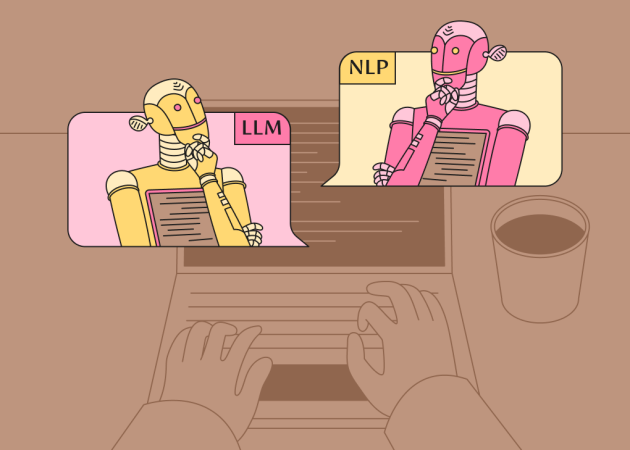
How to Tackle Seasonal Overload with a White-Label WordPress Partner: A Guide for Agencies
Contents
Contents
You know the feeling. The sales pipeline is overflowing, and new projects are landing faster than you can assign them. Your team’s success has brought a surge of opportunity. But with that surge comes a dilemma: How do you scale your custom WordPress development capacity to meet this demand?
For many digital agencies, this is a recurring challenge that often defines the final quarter of the year. The instinct is to say “yes” to every exciting project. But stretching a team past its limits has consequences that ripple beyond a few missed deadlines. Let’s look at why this overload happens and, most importantly, what you can do to avoid it.
Why Agencies Face Seasonal Overload
Even the most well-prepared agencies face periods of intense demand that strain their in-house capacity. There are two primary reasons for that:
- Predictable Seasonality. The Q4 rush is a classic example. Black Friday, Christmas, and New Year campaigns create a massive spike in requests for new landing pages, feature rollouts, and performance optimizations. Compounding this is the end-of-year budget rush, where clients are eager to spend their remaining funds, which leads to a deluge of projects that all need to start now. These spikes require a rapid increase in resources, but it’s temporary. Come January, you might not need that expanded team.
- Unpredictable Success. Your sales and marketing efforts don’t always yield results on a neat, linear schedule. A successful campaign or a strong quarter can lead to several large clients signing on simultaneously. While fantastic for growth, it creates an immediate fulfillment crisis if your development team is already at capacity. Turning down these hard-won projects is not an option, but where do you find the skilled hands to deliver?
This creates what many describe as the “feast or famine” cycle. During slow periods, you worry about keeping your team productive. During busy periods, you stress about capacity constraints limiting growth opportunities.
Client decision-making and competitive pressures create demand patterns that resist neat forecasting. You might have six months of steady, manageable workflow, then suddenly need to deliver three major WordPress projects simultaneously within aggressive timelines.
In these scenarios, you’re caught between growth opportunities and limited resource allocation — a position that forces difficult decisions.
Discover more WordPress insights on anything from WordPress maintenance for agencies to performance optimization:
The Hidden Costs of Seasonal Overload
Trying to manage these spikes by simply working your existing team harder or rushing into hiring is a short-term fix with probable negative long-term consequences. The true costs are rarely line items on a budget sheet. Let’s take a closer look at several hidden consequences you might encounter.
Human Cost
The most immediate impact is on your people. Burnout poses a significant risk when teams are consistently pushed beyond a sustainable pace. But the costs of trying to “hire your way out” of a temporary spike are even more profound:
- Recruitment & Onboarding. The process of finding, interviewing, and hiring a qualified developer is expensive and time-consuming. You’re not just paying recruiter fees. You’re also diverting your senior developers’ valuable time to technical interviews and vetting. Once hired, a new team member needs weeks, if not months, of onboarding to become fully productive within your workflows and culture.
- Slow Ramp-Up, Costly Ramp-Down. By the time a new in-house developer is fully integrated, the peak demand may have already passed. This leaves you with excess capacity and extra costs.
This cycle creates a so-called “hiring whiplash” — constantly adjusting team size based on unpredictable demand, never achieving the stability needed for optimal performance.
Quality Costs
When your team is juggling more projects than they have hours in the day, something has to give. Often, it’s quality. To sustain a high level of client satisfaction, you might be tempted to fit “just one more project” in. This decision can lead to rushed development and degraded client experience.

Financial Costs
While intertwined with the points above, the direct financial costs are to be prioritized. The primary challenge is the mismatch between a fixed cost (a full-time employee) and a variable need (project spikes). You end up paying for downtime during slower periods or incurring the heavy overtime and recruitment costs during surges. The financial impact of fixing bugs, managing client complaints, and the inefficiency of a burned-out team all hit the bottom line directly.
Opportunity Costs
This is perhaps the most significant and often overlooked cost. What is the price of saying “no”? When a high-value project lands and your in-house team is fully committed, your only options are to decline the work or ask the client to wait. In a fast-paced market, a potential client is unlikely to wait. They will simply go to your competitor. You don’t just lose that one project. You lose the entire potential lifetime value of that client and any referrals they might have provided.
Explore these articles to get a closer look at the latest WordPress innovations:
What is a White-Label WordPress Partnership?
So, how do you build the operational efficiency to handle these peaks without the associated costs and risks? White-label services lend a helping hand.
In this type of cooperation, a white-label WordPress partner functions as an invisible extension of your own team. The model is built on trust and integration, and allows you to scale your development capabilities on demand. Here’s how it works.
You, the agency, maintain 100% of the client relationship. You can handle various parts of the project, including communication, project management, and strategic direction. The white-label partner’s role is to serve as your expert development engine in the background.
A white-label partner adapts to your workflows, communication tools, and coding standards, making the collaboration feel as simple as assigning a task to an in-house colleague.
“White-label partnerships solve the classic agency conundrum: how do you say yes to great opportunities when your team is already at capacity? We become that extra capacity without any of the overhead,” shares Alisa Prudius, our Project Unit Coordinator.
By working with a dedicated white-label partner, you gain instant access to a vetted development team precisely when you need it, and you can scale back down just as easily when the rush is over. This allows you to accept new opportunities and protect your team from agency burnout.
How White-Label Services Solve the Overload Problem
Your in-house team represents a fixed capacity, while client demand is variable. A strategic white-label partnership is designed to bridge this gap. It gives you a flexible layer of expert resources you can tap into on demand.
In addition to this, a clear estimate and a realistic timeline can be provided based on the project designs and specifications, which you can then communicate to your client.
| Traditional In-House Scaling | White-Label Partnership | |
| Timeline | 1-3 months (recruitment + onboarding) | Immediate (existing team is ready to start the project) |
| Upfront Investment | High (recruitment, equipment, benefits) | Low (project-based engagement) |
| Project Management Overhead | Direct but capacity-constrained | Seamless (you maintain all client contact) |
“With a reliable white-label partner by your side, you can commit to realistic timelines,” explains our Project Unit Coordinator. “Instead of telling clients you’re booked for two months, you can have accurate delivery dates and show your proactiveness.”
To sum up, white-label WordPress development empowers your clients to get the same level of service they expect from your agency, while you avoid the overhead and risks associated with rapid hiring. It is purely about capacity on demand, without the traditional costs of scaling.
Dive deeper into the world of WordPress:
How to Select the Right White-Label Partner
Here’s what to look for in the white-label company you can bank on:
Deep Experience in White-Label Work
A true white-label partner has processes designed for invisibility. This is non-negotiable. Ask potential partners about their standard operating procedures. Is their code completely free of any references to their own company? This operational framework is the foundation of a successful white-label relationship.
Technical and Process Alignment
Your partner’s technical approach should be compatible with yours. If you value clean, scalable code and a specific development methodology, ensure they do too. Beyond just coding skills, look for mature, well-defined processes for project management, tech leadership, and quality assurance. A dedicated PM, clear oversight from a tech lead, and a rigorous QA process are essential for a high-quality product that you can proudly stand behind.
Communication and Accountability
In a white-label arrangement, you are the bridge to the end client. Therefore, your partner should be an impeccable communicator. This means clear and timely updates, early discussions of potential risks, and proactive accountability. You need a partner who keeps you so well-informed that you can manage your client’s expectations with confidence and without ever having to chase for information.
Scalability and Flexibility
A perfect match can adapt to your needs. They have the capacity to take on projects quickly and offer a range of engagement models. Sometimes you need a full project built from scratch. Other times, you may just need a dedicated developer to augment your team for a few months. And occasionally, you might just need a few hours of ad-hoc support to fix critical bottlenecks. A partner with this flexibility becomes a versatile tool in your operational arsenal.
Cultural Fit
While a partner can solve a short-term capacity issue, the greatest value comes from a long-term relationship. When a WordPress development partner understands your standards, your clients, and your way of working, the collaboration becomes incredibly efficient. Look for a team that shares your values and is invested in building a stable, long-term collaboration. This trust is probably the most important thing.

How to Start Your Partnership with Beetroot
We understand that bringing on a new development partner is a significant decision. That’s why our onboarding process is transparent. We want you to be completely confident in our ability to deliver before making any long-term commitment.
Here’s how we build a partnership that works, step by step.
Step 1: The Discovery Call — Aligning on Goals
It all starts with a conversation. You’ll connect with one of our solutions experts to discuss your specific situation.
The goal of this call is simple: to determine if we are a genuine fit for your agency’s needs.
Step 2: The ‘Litmus Test’ — A No-Risk Estimate
The next step is to give you a concrete, real-world benchmark. We invite you to provide the scope for a project you have recently completed.
Based on that scope, we’ll provide a blind estimate. This allows you to compare our pricing, proposed timeline, and approach directly against a known data point.
Step 3: Scaling the Partnership — Your Flexible Team
From here, the partnership can scale to meet your needs:
- Project-by-Project. Engage us as needed when you have overflow work or projects that require specific technical expertise. We also provide website support and maintenance services.
- Dedicated Developer/Team. For ongoing needs, we can embed one or more of our developers directly into your team. You can hire WordPress developers with Beetroot.
This approach mitigates risk and guarantees that by the time we are working on major projects together, we operate as a single, efficient team.
Final Thoughts
Seasonal overload doesn’t have to be a source of lost opportunity. You can transform volatility into an advantage with a white-label partner by your side. You gain the agility to say “yes” to more projects, the confidence that quality will never be compromised, and the ability to grow your agency sustainably.
Ready to start growing with confidence? Let’s schedule a brief discovery call to explore how a flexible WordPress partner can help you navigate your next peak season: contact us.
FAQs
What is white-label outsourcing? How is that different from traditional outsourcing?
Traditional outsourcing typically involves handing off complete projects to external teams who work independently (you can easily outsource WordPress development). White-label partnerships maintain your agency as the sole point of contact with clients while your development partner works invisibly behind the scenes under your brand.
Can a white-label partner communicate directly with my clients?
This depends on your chosen engagement model. For standard white-label projects, all client communication goes through your agency to keep brand consistency and control the relationship. However, if you choose a dedicated developer or team extension approach, developers can be fully integrated into your operations using your agency email addresses and systems. This allows for direct client communication when needed.
How do you ensure the quality of development under a white-label model?
Our WordPress unit has been honing its craft for over a decade. When you partner with us, a project isn’t just assigned to a developer in a vacuum. It’s managed by one of our dedicated Project Managers, overseen by a Tech Lead who ensures the architectural approach is sound and the code is clean, and then tested by our QA team before it ever gets to you. This multi-layered approach de-risks the development process and ensures the final product is stable, scalable, and secure.
Is it cost-effective for small agencies?
White-label partnerships can be particularly valuable for smaller agencies. This model enables you to focus on core priorities — strategy, sales, client relationships, and marketing — while we handle the technical execution. It is an excellent strategy if you want to scale your business and take on larger projects without taking on the financial risk and administrative burden of hiring full-time employees.
What types of projects are best suited for a white-label WordPress partnership?
White-label partnerships work well across the WordPress project spectrum: custom site development from scratch, complex enterprise WordPress implementations, e-commerce solutions, and ongoing maintenance work. The most important thing is to find a partner whose capabilities match your typical project requirements and quality standards. If you’re interested in discussing the details, drop us a line.
Subscribe to blog updates
Get the best new articles in your inbox. Get the lastest content first.
Recent articles from our magazine
Contact Us
Find out how we can help extend your tech team for sustainable growth.







